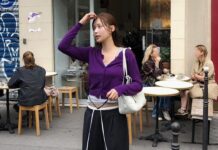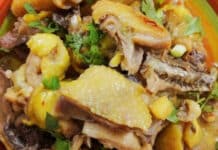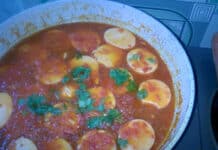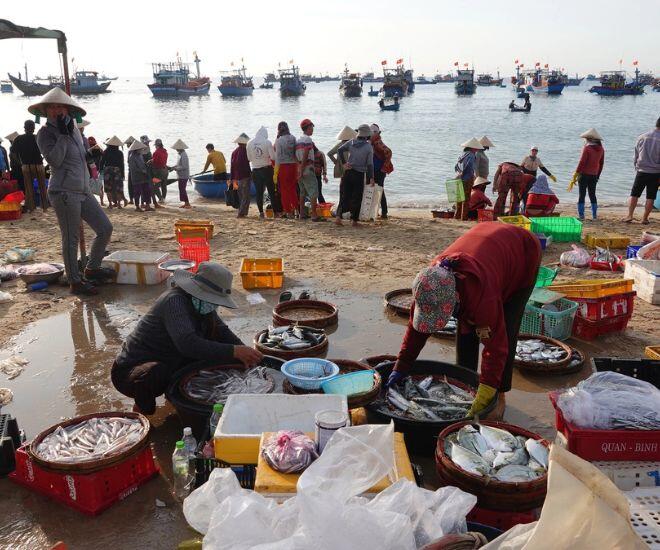
The sun had just begun to peek over the horizon, casting a warm glow on the bustling market. It was still early, around 4:30 am, and the summer heat had not yet reached its peak, but the market was already abuzz with activity. This was the time when hundreds of women from the village and surrounding areas would converge, creating a lively and unique atmosphere.
Out at sea, fishing boats that had set sail the previous afternoon bobbed gently on the waves as they made their way back to shore after a long night of hard work. Simultaneously, along the coastline, hundreds of traditional fishing baskets lay quietly, awaiting their turn to be used. It was also the time for the “rooi ca” women, who specialized in buying and selling fish, to gather on the beach, their eyes keenly scanning the horizon for the returning boats.
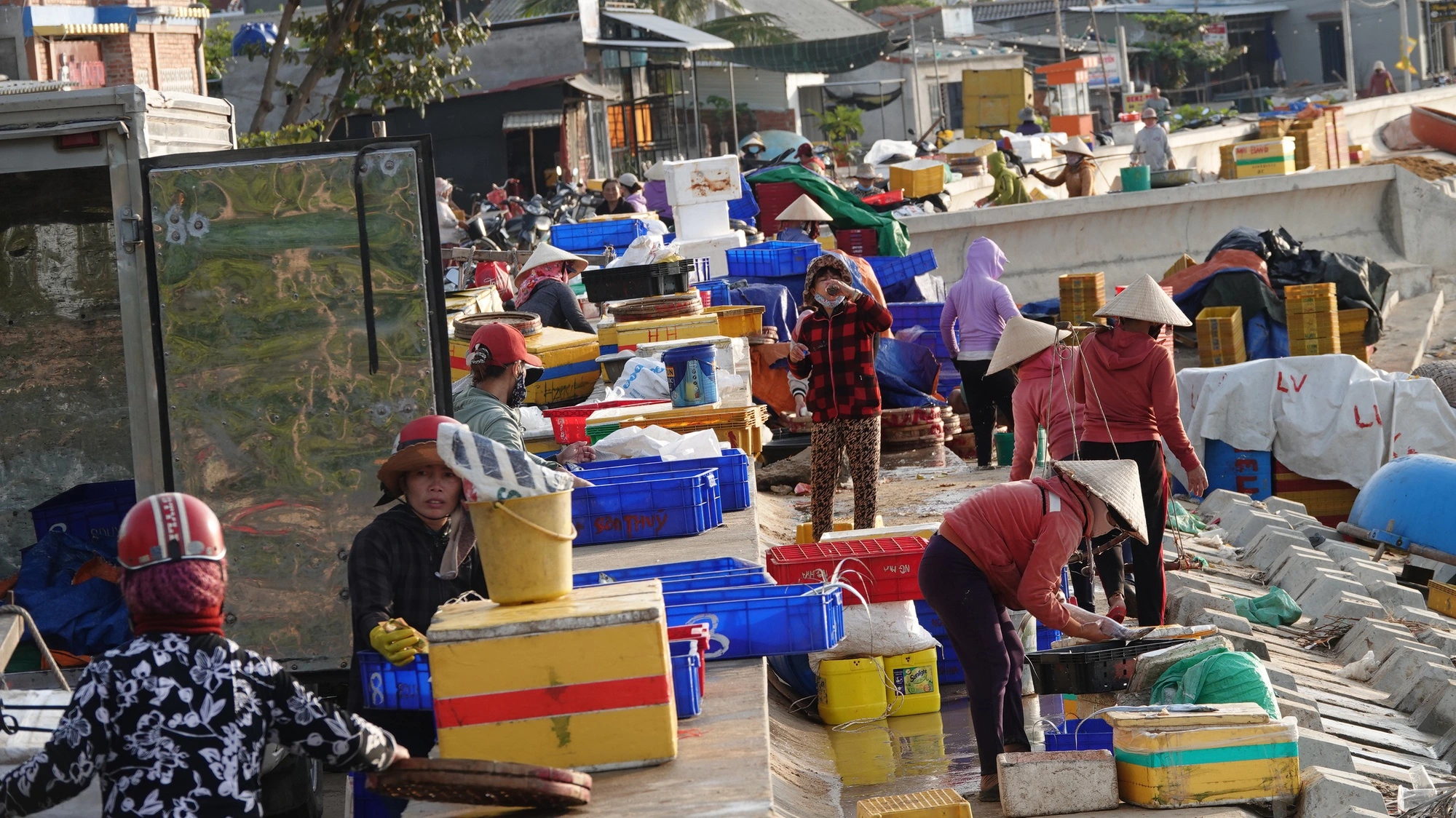
These women could be divided into two groups: the “rooi bo” and the “rooi nuoc.” The “rooi bo” waited on the shore, ready to swarm the boats as they docked, while the “rooi nuoc,” bolder and more adventurous, rowed their baskets out to the boats, climbing aboard to purchase the catch directly from the fishermen. This division of labor not only showcased their expertise but also their deep connection to the sea.
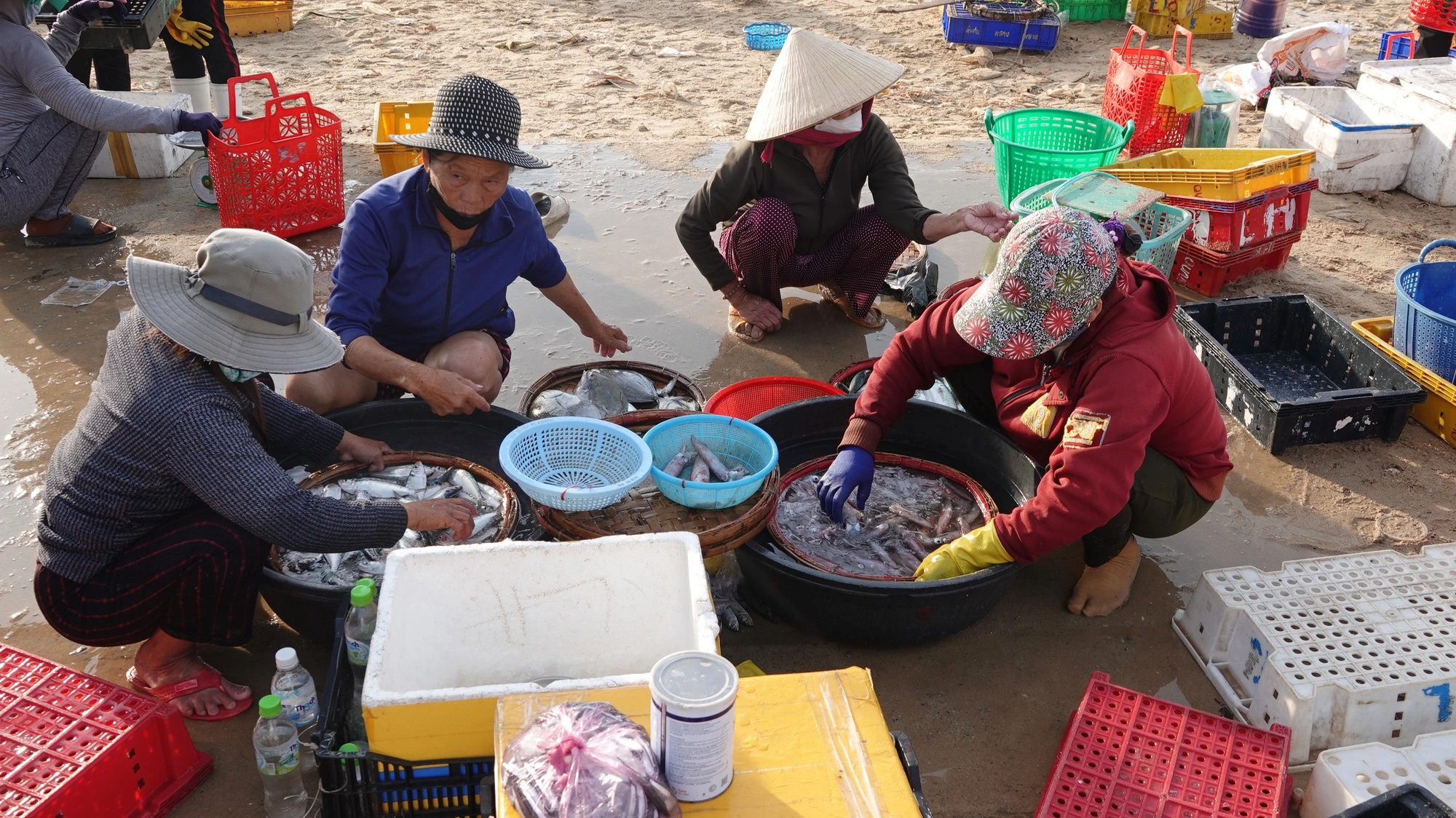
As the fish were bought, they were swiftly sorted and packed into ice-filled containers lined up along the pier. From there, the fresh seafood, rich with the taste of the ocean, was loaded onto motorcycles and transported to various markets in Binh Son district, mostly sold to regular customers. The sight of these motorcycles, laden with fish and heading out in a convoy, was a testament to the vibrancy and vitality of this unique market.
In the past, before the advent of bicycles and motorcycles, the women of Phuoc Thien had to carry their fish on shoulder poles, selling door-to-door or supplying markets in distant regions like Chau O, Binh Trung, Binh Nguyen, Binh Long, and Binh Hiep in Binh Son district. Traveling was challenging in those days, requiring multiple ferry crossings, but their perseverance and unwavering work ethic ensured that the seafood from the coast reached the tables of inland residents.
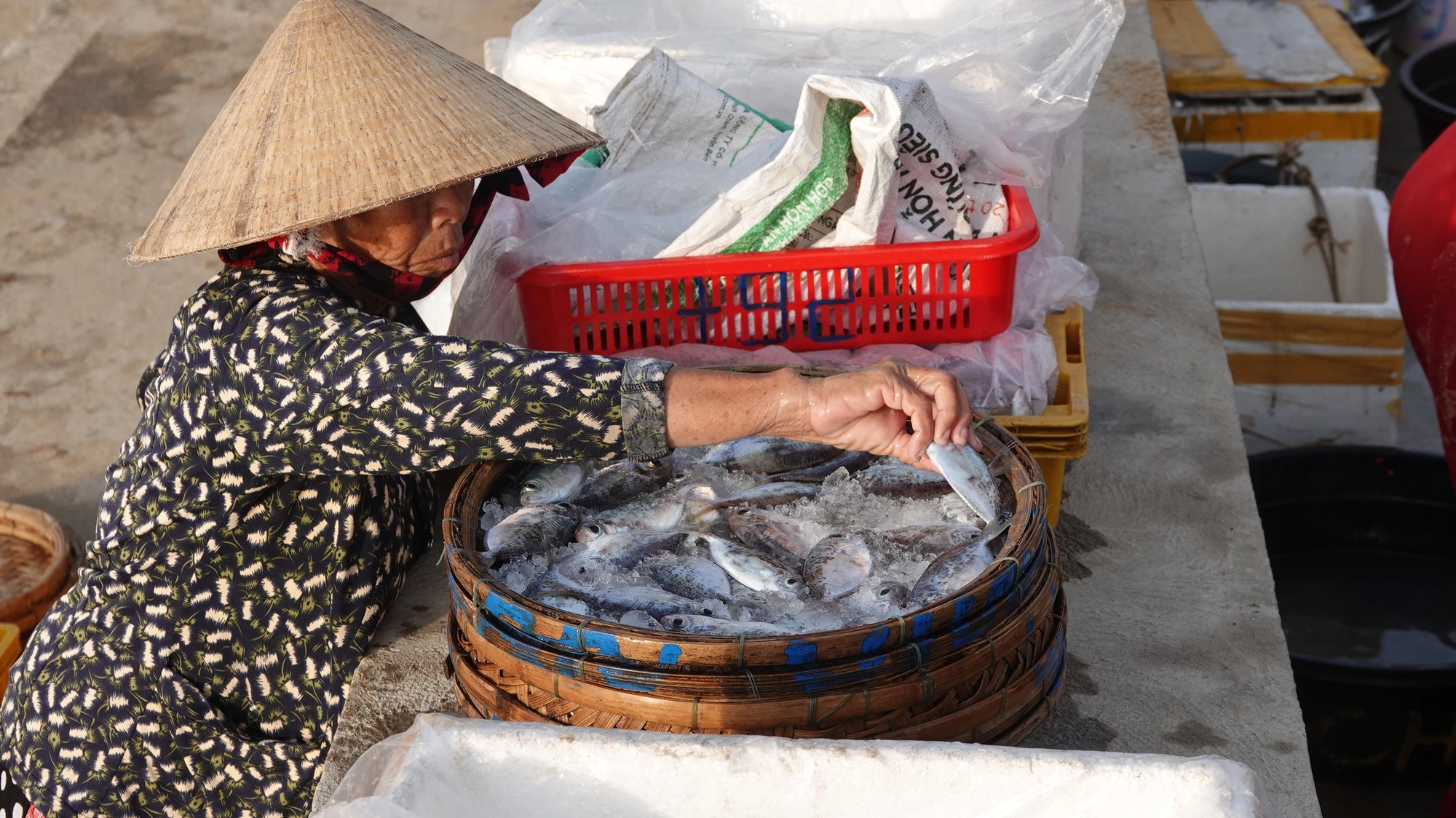
The “rooi ca” market of Phuoc Thien was more than just a place of commerce; it was a unique cultural phenomenon, a microcosm of the challenging yet compassionate lives of the coastal fishermen. Each new day, as the sun rose over the beach, brought a fresh chapter in the story of these resilient women, filled with emotion and a strong will to survive.


